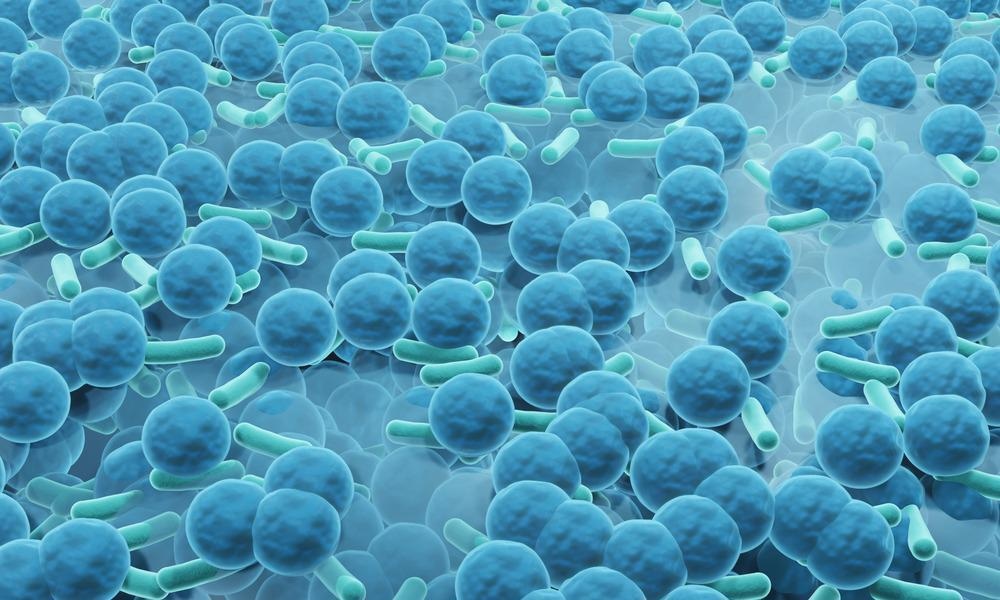AZoM talks to Dr. Anne Meyer about her novel research around the 3D printing of biofilms.
Please can you introduce yourself and tell us how you began researching both 3D printing and biofilms?
I’m Anne Meyer, an Associate Professor in Biology at the University of Rochester. My research into both 3D printing and biofilm research began in 2015, when I was teaching an amazing group of undergrads as the head advisor of the TU Delft iGEM (International Genetically Engineered Machine) team.
My students had the task to brainstorm and carry out their own synthetic biology project in only 9 short months, and they came up with the idea to develop the first 3D bioprinter for printing bacteria. Since biofilms are spatially organized, our team thought that a 3D printer could be a good way to produce model biofilms in an easy, reproducible way.
Could you please describe what a biofilm is and how they are generally utilized?
A biofilm is a spatially organized group of bacteria that live a communal lifestyle. Biofilms can be useful for humans, for example by helping to purify drinking water in a wastewater treatment plant. Biofilms also have a harmful impact on human health and infrastructure; biofilms can cause corrosion on many surfaces including fuel tanks, and biofilm-dwelling bacteria are responsible for up to 60% of all cases of infectious diseases.
When bacteria adopt a biofilm lifestyle, they typically become much more physically robust, so that they are difficult to scrape off of surfaces, as well as more biologically robust, so that they are now resistant to being killed by antibacterial treatments that would be able to kill the non-biofilm-dwelling bacteria.
Your lab has developed a novel means of manufacturing biofilms using 3D printing. Could you please describe how this process was developed and how 3D printers are utilized in this way?
Our project started by engineering new strains of bacteria that can be induced to produce extracellular biofilm molecules: long protein fibers called curli that stick the bacteria to each other and stick the biofilm down to a surface. When we print the bacteria within a hydrogel, the deposited bacteria develop the characteristic dense extracellular matrix of biofilms.
The 3D printing process allows us to control the bacteria density and location within the printer biofilm, which lets us both test hypotheses about biofilm function as well as reproduce engineered biofilms that capture the spatial patterning of natural biofilms.

Image Credit: ART-ur/Shutterstock.com
How do these manufactured biofilms compare to those that are naturally formed?
Our 3D-printed biofilms can reproduce many of the features of natural biofilms, including physical resilience and resistance to antibacterial treatments, the features that make it hard to eradicate natural biofilms.
What is the benefit of using additive manufacturing here?
Additive manufacturing has allowed us to intentionally alter the spatial organization of biofilms, which let us test hypotheses about which natural biofilm features result in their ability to resist antibacterial treatments. Also, by depositing bacteria in specific amounts and locations within the 3D printed biofilms, our biofilms are highly consistent and reproducible. In the future, we will be able to use multichannel 3D printing to create model multispecies biofilms, which are especially difficult to reproduce in a laboratory.
Why was E.coli chosen as the bacteria to be used in the development of these films?
We chose to work with E. coli on this project because it is very well-characterized and easy to engineer. These features allowed us to easily create engineered strains that express biofilm matrix components under specific induction conditions.
Biofilms can be harmful as well as useful. How can these engineered biofilms help us to understand ways of mitigating their negative potential?
If we can use our 3D printing approach to make laboratory biofilms that behave similarly to harmful natural biofilms, then we can use our 3D printers to make “biofilms-on-a-chip” as testbeds for testing out potential new antibacterial treatments that would be effective against biofilm-living bacteria.
Are there any limitations or elements yet to be understood in regard to the development of this process?
As 3D printing of biofilms begins to move into the production of multispecies biofilms, we will need to understand more about how multiple strains of bacteria can be able to co-exist within a printed hydrogel and develop new techniques for imaging and assaying the positions and metabolic activities of the bacteria within the printed biofilms.
How far do you believe your research will impact the biomedical and materials fields?
I hope that our 3D printing techniques will be the first step towards producing reproducible pathogenic biofilms in a laboratory so that researchers can use them as testbeds for identifying new biofilm-blocking drugs that can be used to help human patients. Our 3D printers could also be used to produce robust biofilms for use in living materials applications, such as biofilms that act as sustainable membranes for water filtration and purification, or that can be used to detect and remediate environmental contaminants.
Your lab has conducted other fascinating research including printing algae onto photosynthetic materials. How far do you believe that 3D printing is capable of revolutionizing science?
3D printing is just now being used to create the first living materials that contain microbes. I think that this new field of engineered materials could be truly revolutionary, able of producing truly living materials that can sustain and regenerate themselves, that can detect and respond to the environment, and that can change their own mechanical properties upon demand.
What are the next steps for the subject matter of 3D printing, and biofilms in particular? Do you hope to conduct further research using printed bacteria?
My laboratory has several active projects where we are taking the field of 3D bioprinting further, to create engineered biofilms able to protect dental health, create tough structural materials that are spatially patterned, or degrade plastics at end-of-life.
Where can readers find more information?
My lab website can be found at: https://sites.google.com/site/annemeyerlab/
Our recently published article on producing biofilms with additive manufacturing can be read open access at: https://pubs.acs.org/doi/10.1021/acssynbio.1c00290
About Dr. Anne Meyer
 Dr. Anne S. Meyer is an Associate Professor of Biology at the University of Rochester, USA. Dr. Meyer received her Ph.D. in Biological Sciences at Stanford University (USA) in 2005. She was a post-doctoral fellow in the Department of Biology at the Massachusetts Institute of Technology (USA). Dr. Meyer served as an Assistant Professor in the Department of Bionanoscience at TU Delft in The Netherlands, prior to moving her research group to the University of Rochester in 2018. She has served as the lead advisor for six iGEM (International Genetically Engineered Organisms) teams, which have won numerous awards including the 2015 Grand Prize. Her research focuses on using quantitative techniques in the fields of biochemistry, microbiology, and biophysics to study structural dynamics, macromolecular interactions, and physiological responses of organisms to environmental stressors. She also uses tools of synthetic biology to engineer novel functions into microorganisms, with a particular focus on the production of improved, tunable biomaterials and the development of new tools for 3D patterning of bacteria.
Dr. Anne S. Meyer is an Associate Professor of Biology at the University of Rochester, USA. Dr. Meyer received her Ph.D. in Biological Sciences at Stanford University (USA) in 2005. She was a post-doctoral fellow in the Department of Biology at the Massachusetts Institute of Technology (USA). Dr. Meyer served as an Assistant Professor in the Department of Bionanoscience at TU Delft in The Netherlands, prior to moving her research group to the University of Rochester in 2018. She has served as the lead advisor for six iGEM (International Genetically Engineered Organisms) teams, which have won numerous awards including the 2015 Grand Prize. Her research focuses on using quantitative techniques in the fields of biochemistry, microbiology, and biophysics to study structural dynamics, macromolecular interactions, and physiological responses of organisms to environmental stressors. She also uses tools of synthetic biology to engineer novel functions into microorganisms, with a particular focus on the production of improved, tunable biomaterials and the development of new tools for 3D patterning of bacteria.
Disclaimer: The views expressed here are those of the interviewee and do not necessarily represent the views of AZoM.com Limited (T/A) AZoNetwork, the owner and operator of this website. This disclaimer forms part of the Terms and Conditions of use of this website.